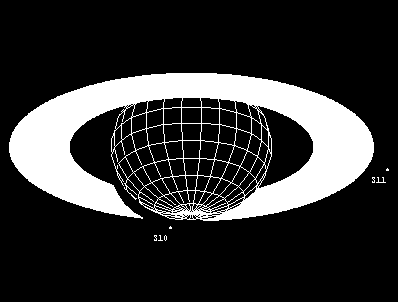|
Ephemerides of the coorbital satellites of Saturn for infrared observations by N.Emelyanov, M.Varfolomeev Celestial mechanics department / Sternberg Astronomical Institute / Moscow University Using the infrared camera, the light of the disk of Saturn may be eliminated. The solution found by Nicholson et al. [1] was to exploit the strong planetary methane and hydrogen absorption at λ=2.0-2.4 μm. Saturn’s rings, however, remain bright in this spectral region. It is a good idea to use the disk of Saturn to occult or to eclipse the bright ring and to observe the satellites as they pass through superior conjunction. Such a situation occurs only four times during Saturn’s 29-year orbital period. The relative positions of the Earth, Saturn and the Sun restrict the useful windows for observations. The next epoch when these observations are possible arrives in 2013. The dates of these rare events for the years 2013-2035 have been precalculated by the authors. Our aim is to encourage observers to observe these satellites, planning observations in advance.
References Celestial mechanics department / Sternberg Astronomical Institute / Moscow University |
